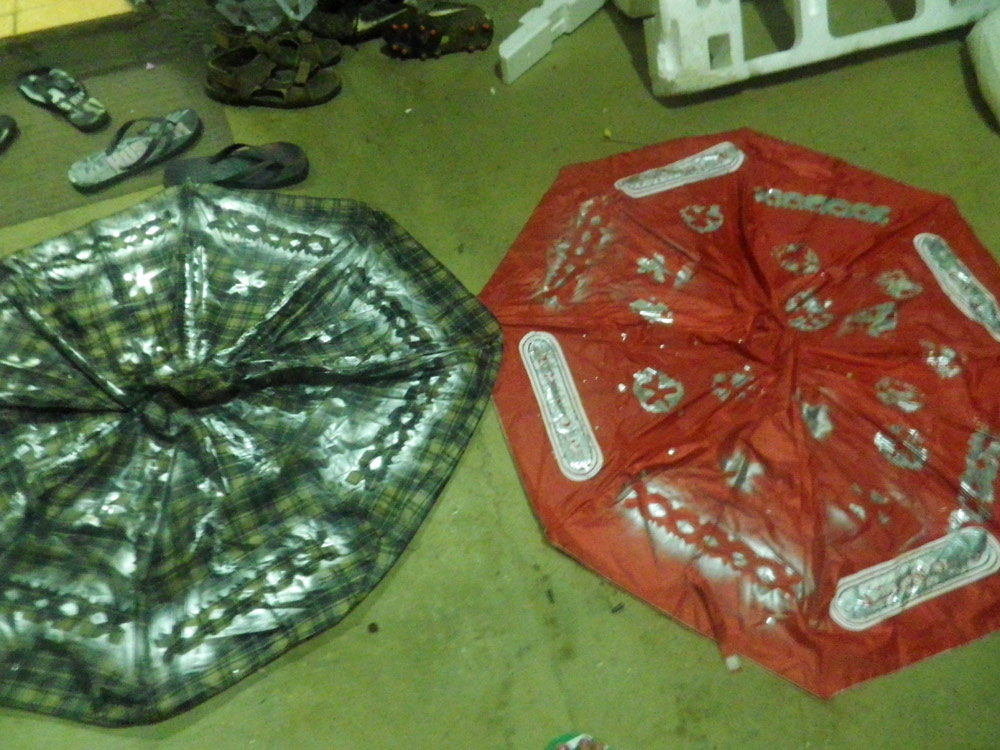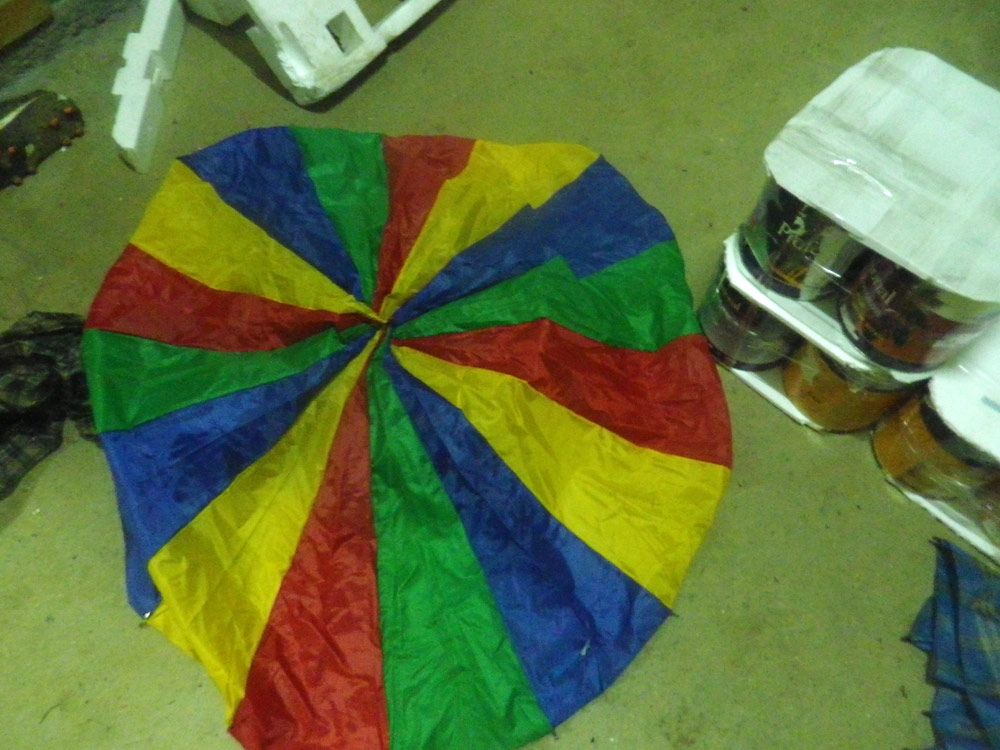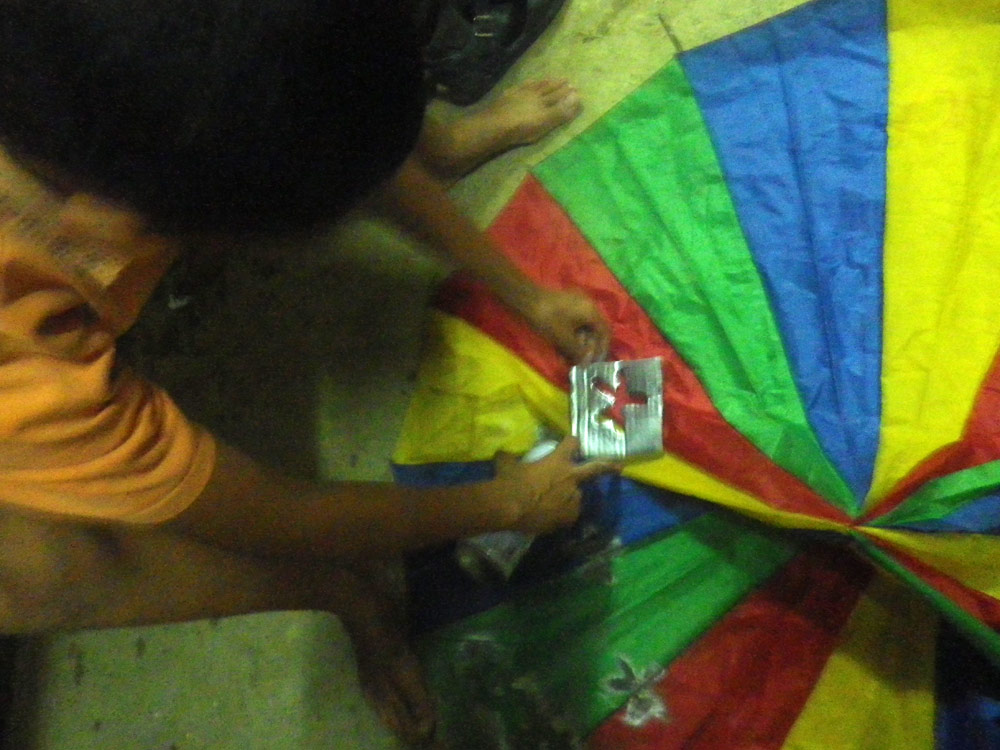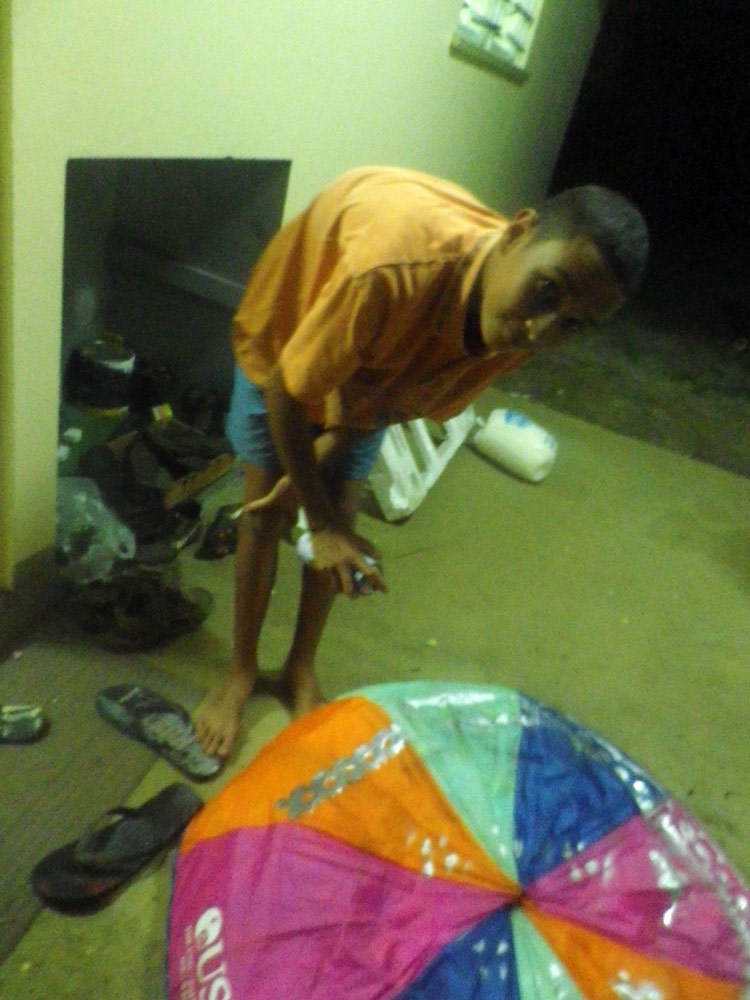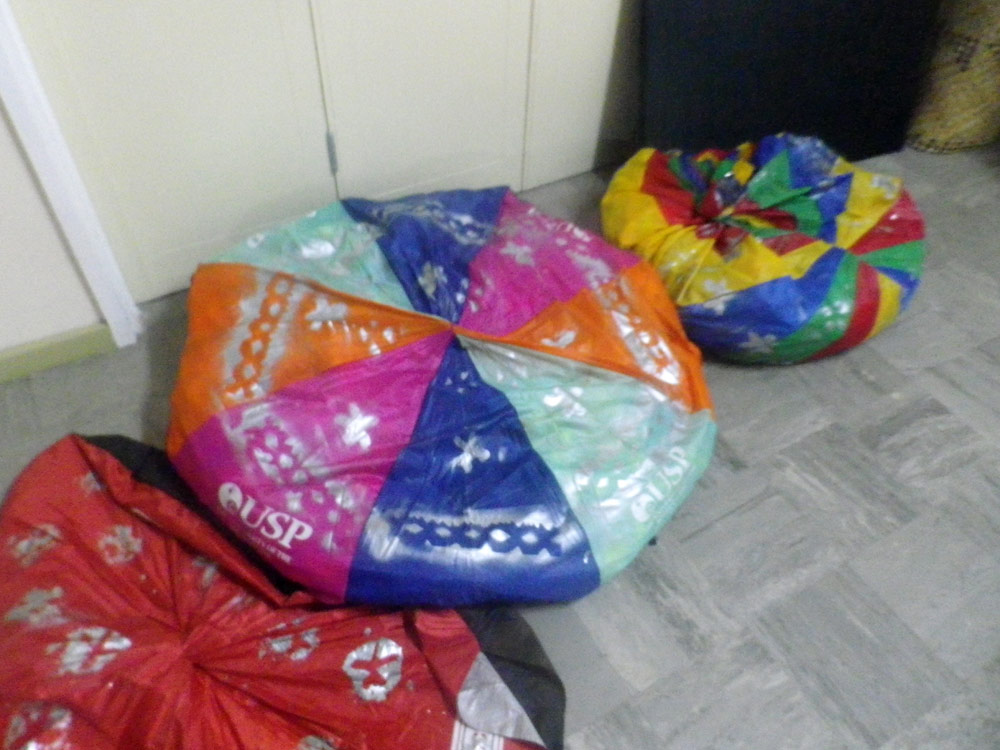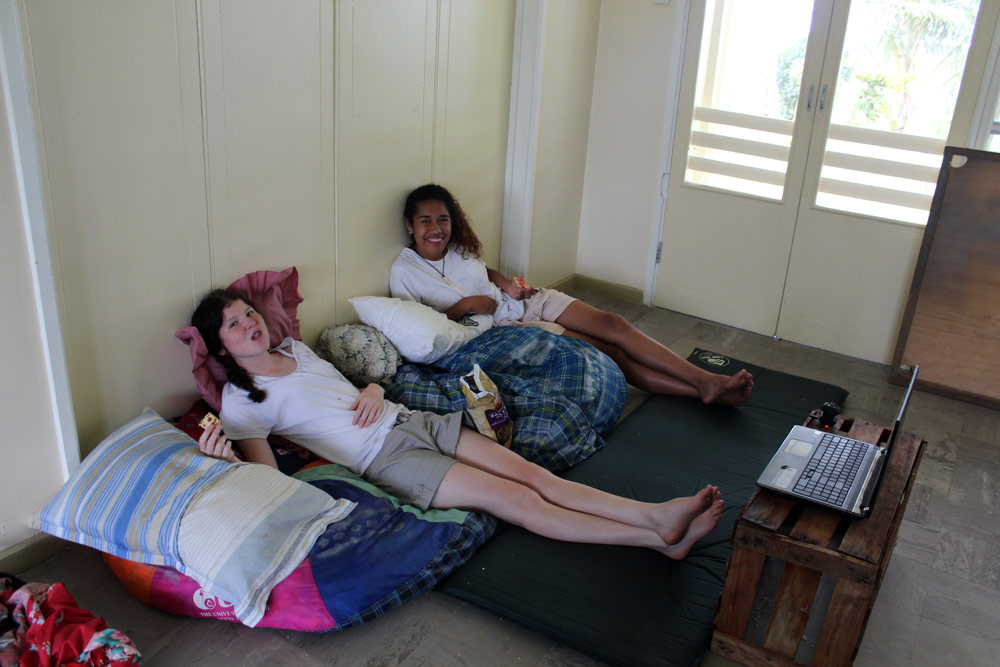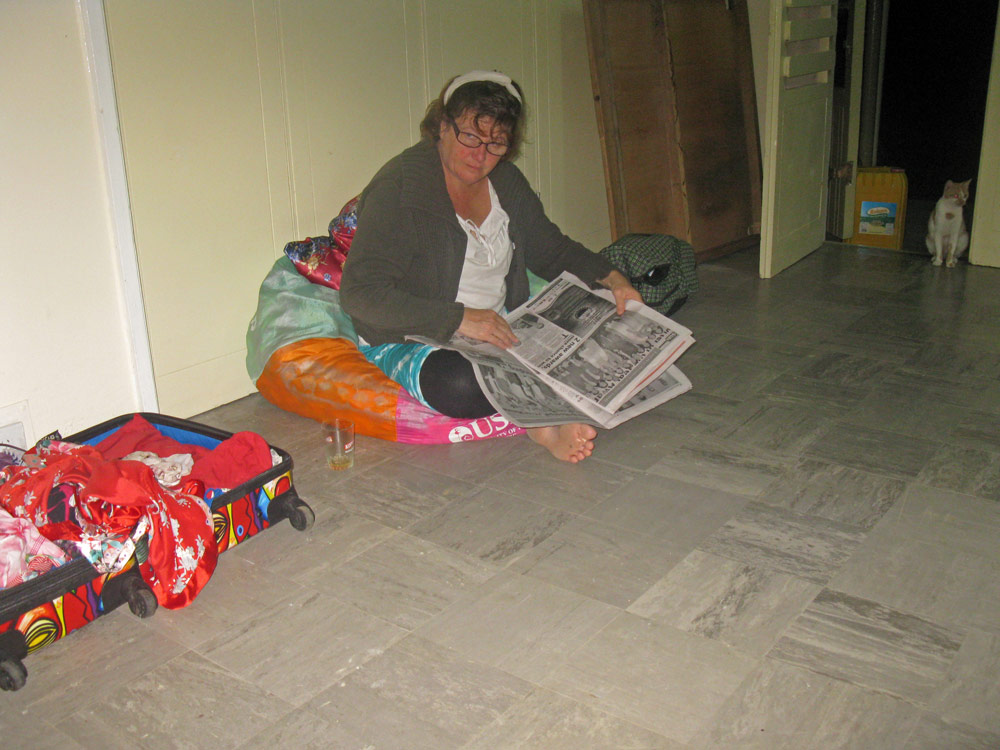How to make a bean bag cushion chair from recycled umbrellas
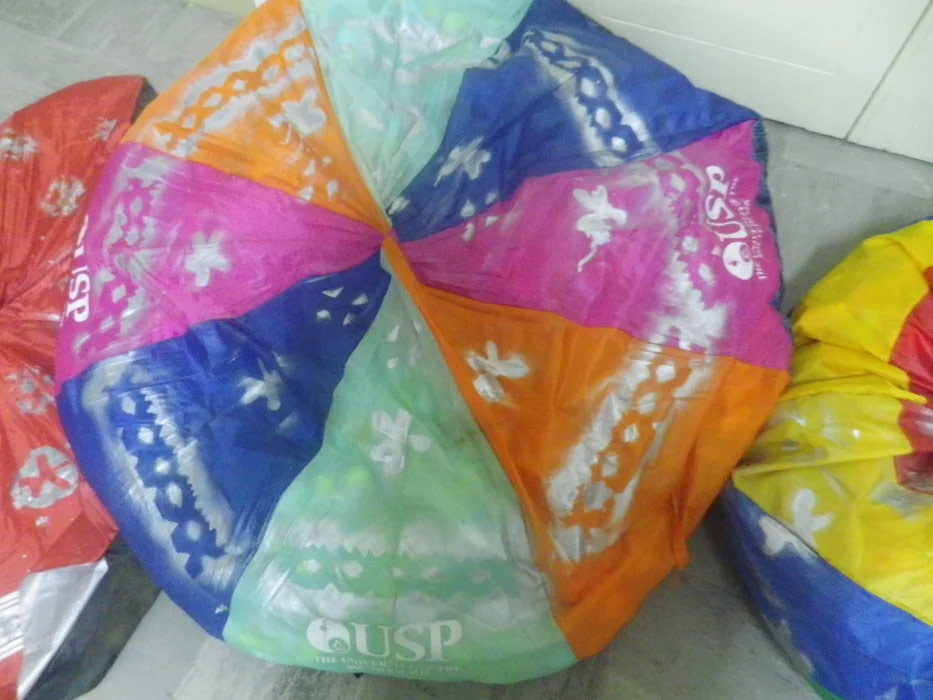
Ever wondered what to do with broken umbrellas? In Fiji, after any downpour of rain, along the roadside, you will see literally hundreds of broken umbrellas – ahh, they don’t make them like they used to.
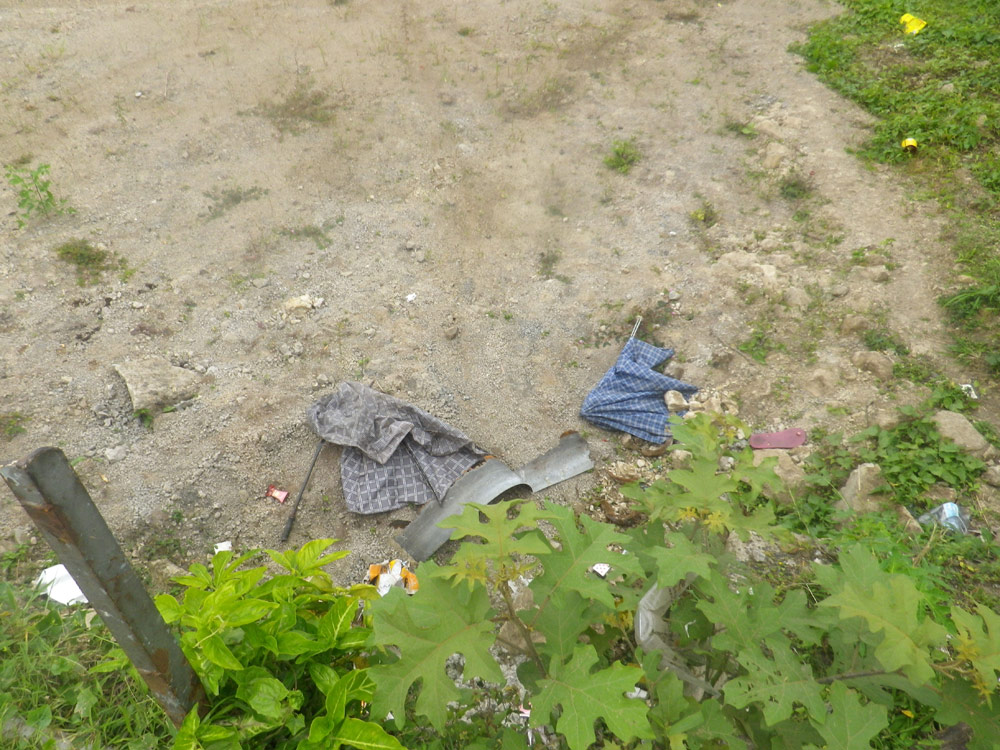 Two umbrellas dumped on the ground
Two umbrellas dumped on the ground
By the way, one thing I discovered when I was doing this project was why my grandma always told me to buy a good quality umbrella regardless of the cost. I have often wondered why umbrellas these days seem so flimsy and turn inside out the the slightest gust of wind. Is it because they are so cheap, and poorly made? Not really. When you have to take one apart, you see the enormous amount of effort that has gone into making one. The umbrella skin is hand stitched very well to the spokes at several places on each spoke, and then hammered into the top of the handle using a metal clamp. However, when looking at the fabric of two umbrellas that seem an equal size, and then sewing them together, I noticed that not all the triangular panels are exactly the same size, even though they look it when the umbrella is up. Actually with the cheap umbrellas, the fabric triangles are all quite different sizes. This must create a tension issue when the umbrella skin is stitched to the spokes, and therefore create instability when the wind catches the umbrella. If I were a scientist, I would do an experiment to see if the part that flies up in the wind, is the section with the biggest piece of triangle fabric compared to the others, and therefore with the lowest tension. Sadly, or maybe a good thing for the world, I am not a scientist.
Now to the real business of this post. Seeing so very many broken umbrellas (actually only the frames break usually, and the fabric is intact) by the side of the road after a bit of rainy weather, and needing some more furniture, I decided to see what I could do.
I took a small stitch unpicker (or scissors would do) with me and walked to the bus stop. On the way I found two or three umbrellas in the gutter, and unpicked the fabric from the frame which took about 20 seconds each time. I stuffed the fabric in my bag and felt bad that I left the frames where I found them. I then got the bus 5 minutes down the road to my local market place, and got off. I collected another 10 umbrellas there, and did the same thing, and went home.
I have since felt so guilty about leaving the frames on the road side that I take them home and use them for trellises for the long beans and cucumber plants.
People thought I was very strange and asked me what I was doing, but now, taxi drivers who have taken me home and seen the cushions I made bring me umbrellas each week when they find them on the road side!
I soaked the umbrella skins in a bit of bleach for a while, washed them and hung them out to dry. The rest was easy!
Check the umbrella skins for any small breaks in the stitching, sew up the top part where it joined the top of the handle (there will be a small hole in the middle of each umbrella circle).
- You can spray paint a stencil pattern if you like.
- Sew two umbrellas of the same size together inside out and leave a small opening to insert the filling.
- Fill with foam chips or polystyrene balls, or even used and clean plastic bags and old clothes.
- Sew up the hole.
Sit down!
Read the paper,
watch TV,
relax!
Alice Tamani, Fiji

PROFILE
Fiji is truly a paradise, but it is being drowned by rubbish. No need for us to go and investigate the famed “garbage island” in the Pacific, it is right here!
You could be a “right person”, if your only act is to share this blog and raise awareness, the 6th degree of separation that you provide could be the key.

